#1 Tip for Making Slipcover Sewing Faster
Whether you’re making just one slipcover for yourself or producing custom covers on a regular basis for clients, this tip for sewing faster will save you time and keep you organized.
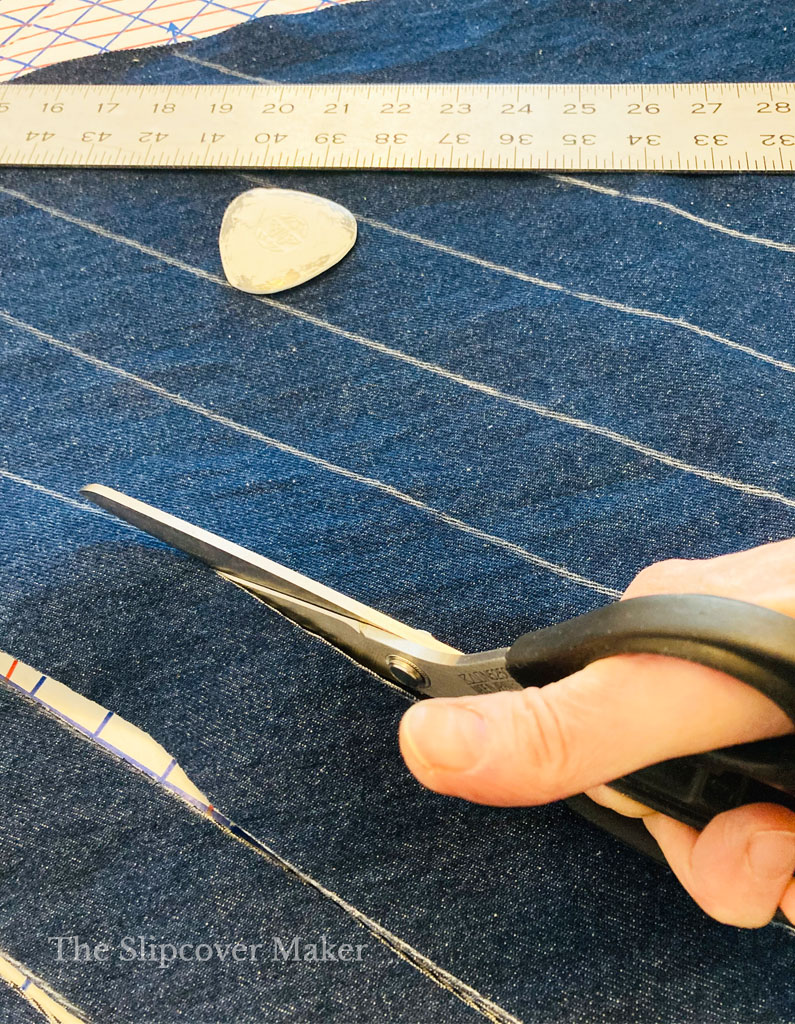
Many years ago I worked in the men’s apparel industry as a product developer. My job included visiting factories in the US and abroad to evaluate sewing quality for all types of shirts, pants and jackets.
It was an eye opening experience, seeing how garments are manufactured in a factory with such speed and efficiency.
One of the most valuable production methods that stuck with me is batching. I now use it for every sewing project including slipcovers.
Batching is when you group certain tasks together and complete them at one time. It speeds up the cutting and sewing workflow no matter the size of project. It’s a real time saver!
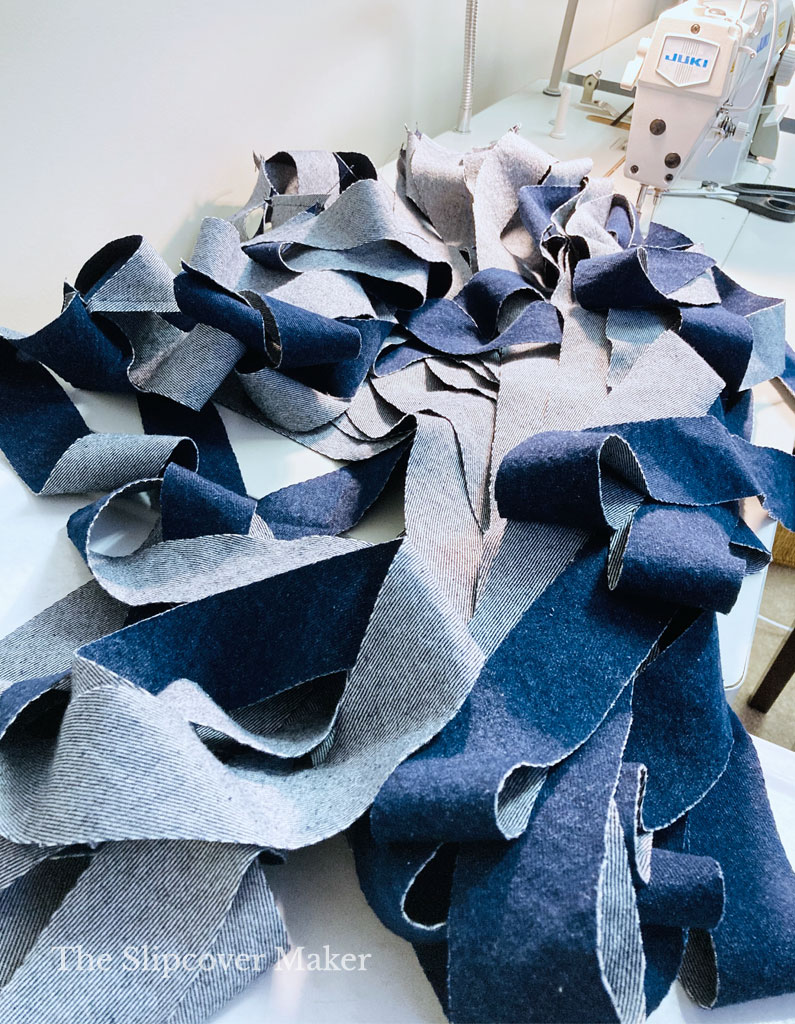
Recently, I completed a large denim sofa slipcover with 6 box cushions, welt cord and a tailored skirt. Here are examples of how I batched tasks to make cutting and sewing faster.
Welt Cord
Make enough welt cord for your entire project at one time. This includes cutting the bias strips, joining them together and stitching the number of yards of finished cord you need.
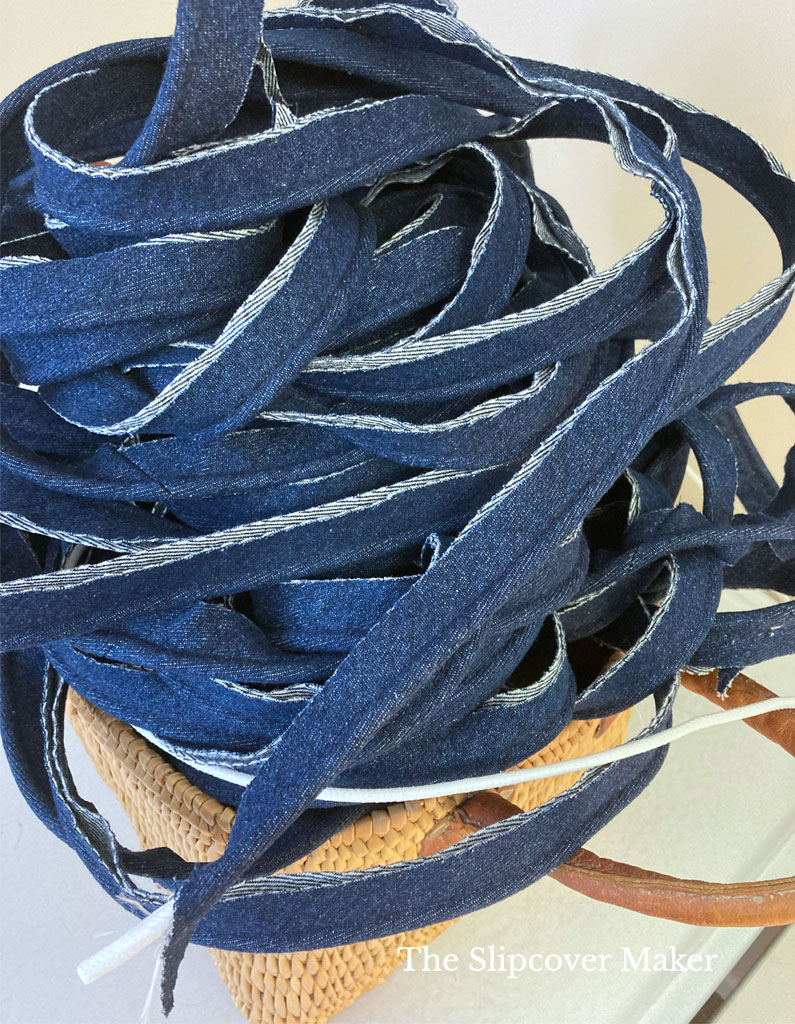
So often I see makers cutting and sewing a few strips of welt cord for just one section such as the arms. Then, later they cut and sew more welt for another section. This approach creates so much extra work and ends up being a time drain.
Batch your welt cord tasks to keep your project moving forward!
Check out my welt cord how-to guide and favorite resources here.
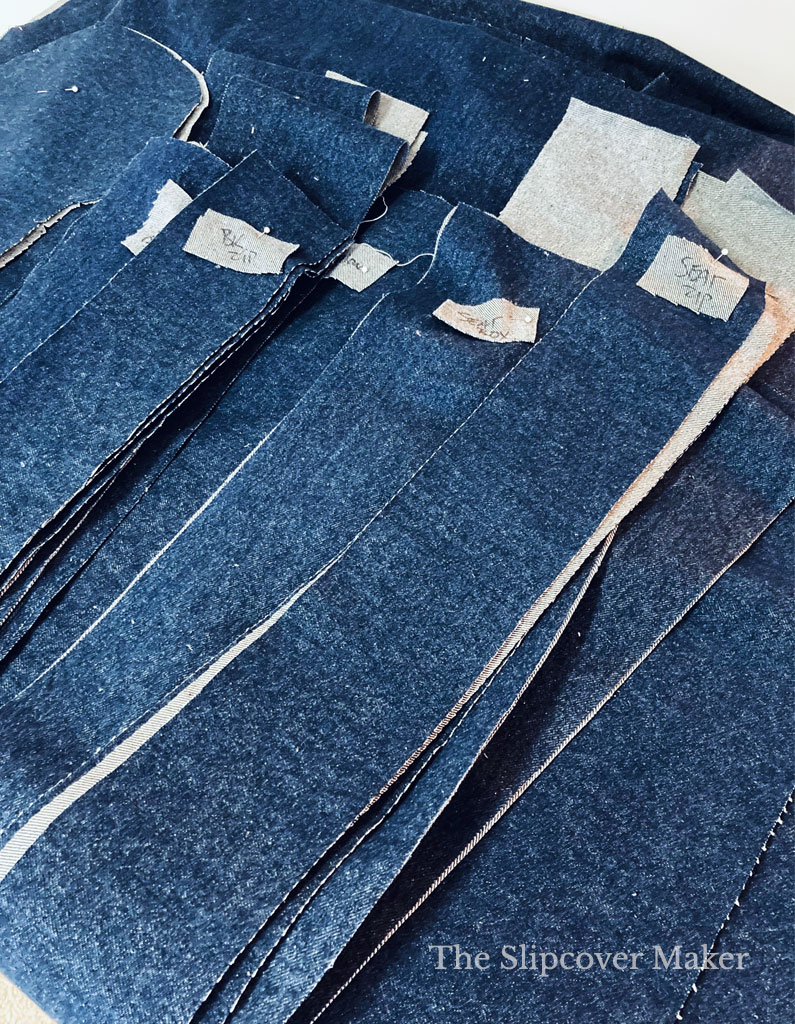
Zipper & Boxing Panels
Cut all zipper and boxing panels at one time. Measuring, marking and cutting these pieces goes so much faster when you batch the tasks.
My project required a total of 12 zipper panels and 6 boxing panels. Batching also helped me keep all of those loose pieces organized.
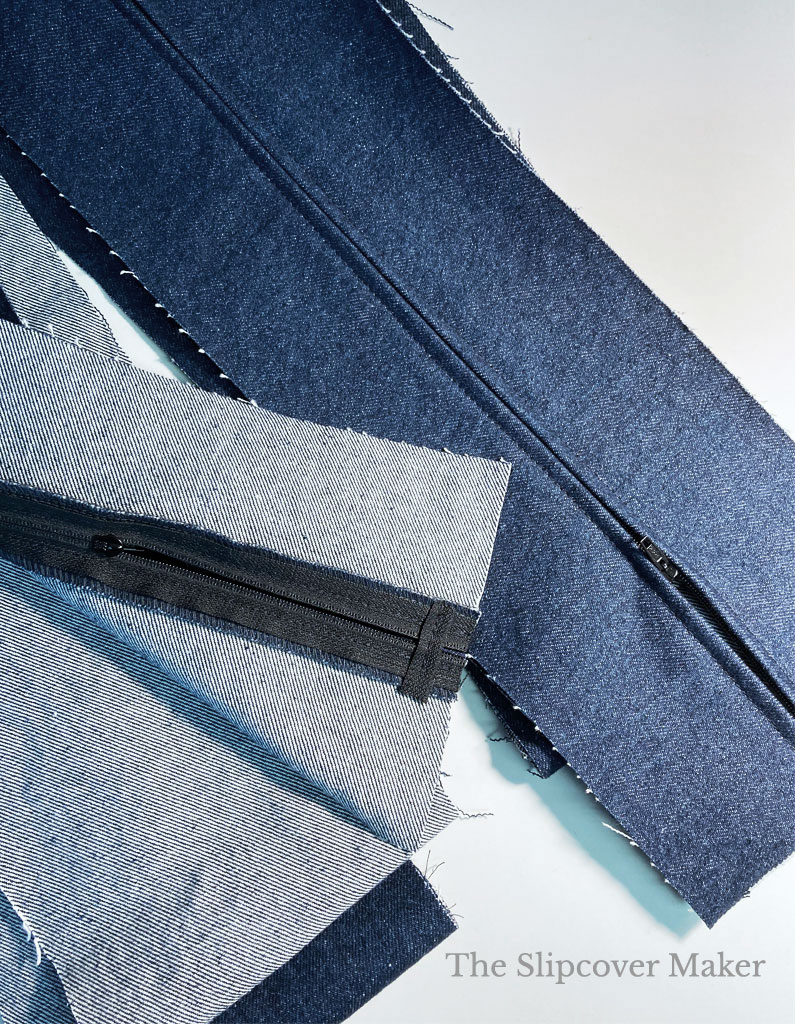
Cushion Zippers
Make all zipper plackets at one time. Stitch zippers to panels and join the boxing.
Batching zipper production tasks really speeds up the sewing process. Then, later on when you are ready to assemble your cushion pieces, your zipper panels are ready to go. Another time saver!
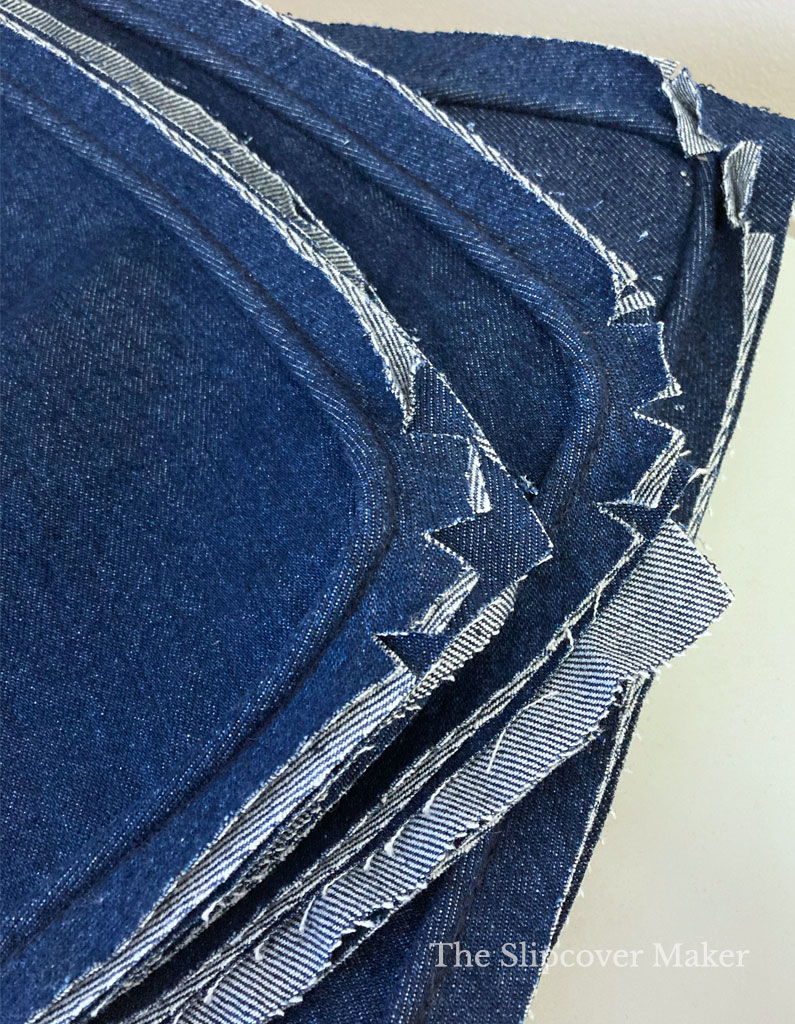
Cushion Pieces
Stitch welt cord to all of your cushion pieces at one time.
I trimmed a total of 12 large cushion pieces with welt cord for my project. That’s a lot of stitching! But believe me, the process goes faster when you batch. Turn on your favorite podcast and get into a groove!
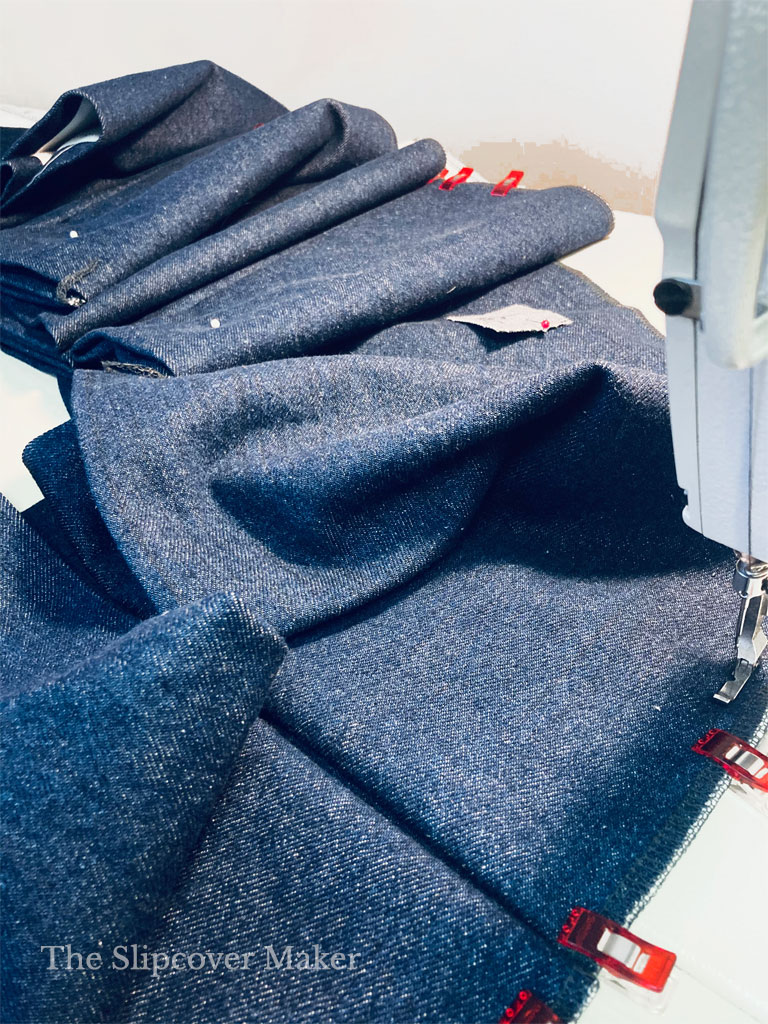
Skirts
Make all skirt panels at one time. This includes measuring, marking, cutting and lining (if needed) each panel. Batch each one of these tasks.
For example, do all of the measuring at one time. Then, all of the marking and cutting at one time. And then assemble the panels all at one time. The process will flow easily.
These are just a few examples of batching tasks for slipcover making. You can use this method throughout the entire process of constructing your custom covers.
If you’d like to learn how I pin fit and sew a slipcover, take a look of my 4-part tutorial.
Thanks so much for following along! — Karen
This summer I plan on making a slipcover for our sofa so this method of batching the tasks will really help! I have batched other tasks with work but never thought about it with sewing a slipcover! Thanks, my friend! Pinned 🥰
You bet, Cindy! Can’t wait to see your finished slipcover!